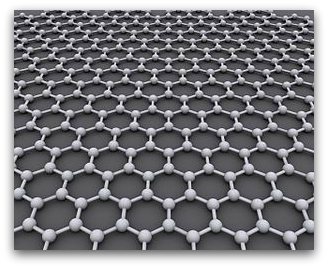
Image: AlexanderAIUS
Graphene’s potential seems limitless. From to patches that monitor glucose and inject treatment to water-splitting capabilities, the popularly proclaimed “wonder material” is finding a home in a host of applications. However, graphene has yet to make it wide-spread, commercial applications.
To help take graphene from the lab to society, the Graphene Flagship has been formed as a European initiative promoting collaborative research on the up-and-coming material. Recently, the initiative published a paper detailing the possibility of creating light-responsive graphene-based devices that could be applied to anything from photo-sensors to optically controllable memories.
(MORE: Listen to our podcast with nanocarbons expert Bruce Weiseman, where we talk graphene, fullerenes, and all things nano.)
This from Graphene Flagship:
The work shows how, by combining molecules capable of changing their conformation as a result of light irradiation with graphite powder, one can produce concentrated graphene inks by liquid phase exfoliation. These graphene inks can then be used to make devices which, when exposed to UV and visible light, are capable of photo-switching current in a reversible fashion.
“This paper essentially gives an additional remote control to a graphene-based electrical device simply by the exposure to light at specific wavelengths,” said Paolo Samorì, team leader of the research. “This is the first step towards the development of graphene-based multicomponent materials and their use for the fabrication of multifunctional devices – if you imagine a sandwich-like multi-layered structure with graphene sheets separated by multiple layers each one integrating a different functional molecular component. Each functional component therefore imparts a new stimuli-responsive character to the material which can respond to different independent inputs like light, magnetic field, electrochemical stimuli, etc., leading to a multi-responsive graphene based nanocomposite.”

